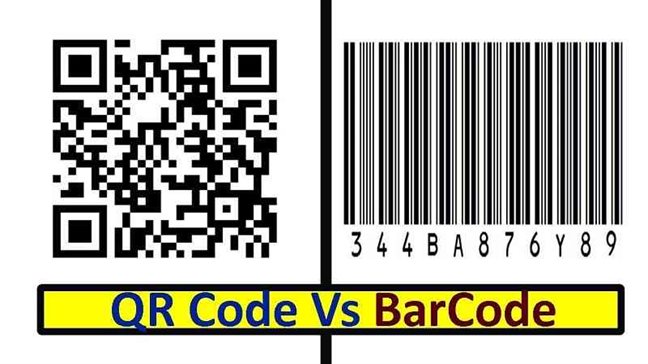QR Codes Vs. Bar Codes: Which is Better for Manufacturers?
27th February 2023, Kathmandu
QR codes and barcodes are two types of machine-readable codes that are used to store and retrieve information.
While they share similarities in terms of their function, they differ in several ways, including their design, capacity, and usage.
Qr Code Vs Bar Code
Design:
Barcodes are linear codes consisting of a series of parallel lines of varying thickness and spacing. They are typically black and white and can be printed on labels, tags, or directly on products.
A barcode scanner reads barcodes by detecting the pattern of the lines and interpreting the encoded information.
QR codes, on the other hand, are two-dimensional codes comprised of a grid of black and white squares arranged in a square shape. QR codes can store more data than barcodes due to their higher data density.
They are also more design-flexible, as they can be customized with logos, colors, and other design elements.
Capacity:
Barcodes typically hold a limited amount of data, usually consisting of product or inventory information, such as a product code or SKU number.
The Universal Product Code (UPC) is the most widely used barcode format, and it is used to identify products in retail settings. Barcodes have a maximum capacity of approximately 20-25 alphanumeric characters.
QR codes, on the other hand, can store much more data, up to 7,000 alphanumeric characters, or over 4,000 characters of binary data. This allows QR codes to store much more complex information, such as website URLs, contact information, and promotional offers.
Usage:
Barcodes are primarily used to manage inventory and supply chains. They are used to track products as they move from manufacturing to distribution and finally to retail.
Barcodes are also used in shipping and logistics to help track packages and shipments.
QR codes, on the other hand, have a broader range of applications. They are frequently used in advertising and marketing to gain access to promotional offers, product information, and other content. Mobile payments, ticketing, and loyalty programs all make use of QR codes.
They can be used to provide quick access to information such as contact details or event details.
Advantages and Disadvantages:
Barcodes are a mature technology with a standardized format. They are widely recognized and can be read by a wide range of devices, including handheld scanners and mobile devices.
Barcodes are also relatively inexpensive to produce, making them a cost-effective option for many businesses. However, they have some limitations, including their limited capacity and vulnerability to damage.
QR codes, on the other hand, can be customized with branding elements and scanned with a smartphone camera. They are also extremely versatile and can be used for a variety of purposes, including marketing, advertising, and payments. QR codes can also be encrypted to prevent unauthorized access, making them more secure than barcodes.
However, QR codes require a smartphone or other device with a camera and a QR code reader app, which may limit their access to some users.
In conclusion, both QR codes and barcodes are valuable tools for storing and retrieving information.
While barcodes are best suited for inventory and supply chain management, QR codes are more versatile and can be used in a variety of applications such as marketing, advertising, and payments. Ultimately, the choice between the two will depend on the specific needs of the business or application.
FAQ:
Can QR codes be used as barcodes?
A QR Code is a type of matrix barcode. They look like a pattern of black and white squares and dots.
QR codes can contain a wide range of data. QR codes are frequently used to store URLs, email addresses, contact information, and text data.
Which is better barcode or a QR code?
QR codes can store more information; whereas a barcode can hold up to 25 characters, a QR code can hold up to 2500 characters. As a result, you can include a lot more information, such as the URL of a product’s webshop page.
QR codes can be ten times smaller than bar codes while remaining readable.







